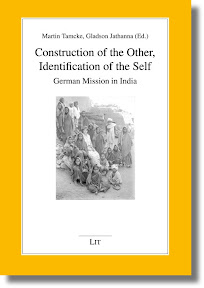Construction of the Other, Identification of the Self
Tamcke, Martin [u.a.] [Hrsg.]:
Construction of the Other, Identification of the Self : German Mission in India / ed. by Martin Tamcke and Gladson Jathanna. - Wien [u.a.] : Lit Verlag, 2012. - xv, 382 S. - (Studien zur orientalischen Kirchengeschichte ; 45)
ISBN 978-3-643-90260-3
EUR 69,90
DDC: 266.02343054
Beschreibung
This volume is a collection of diverse contributions that attempt to revisit the European construction of the Indian Other. In their attempt to identify their European Self, the missionaries constructed India as their Other and archived such constructions. Such archival narratives epitomize the conviction of the missionaries in their Christian faith and their belief in the superiority of the European Self. These narratives, however, provide us (for whose eyes they were not meant originally) with spaces to locate our past and to identify our own Self. This volume seeks to converse with such spaces. [Verlagsinformation]
Herausgeber
MARTIN TAMCKE, Professor für Ökumenische Theologie unter besonderer Berücksichtigung der orientalischen Kirchen- und Missionsgeschichte an der Theologischen Fakultät der Georg-August-Universität zu Göttingen. Profilseite.
GLADSON JATHANNA, Wissenschaftlicher Mitarbeiter am Institut für Ökumenische Theologie und Orientalische Kirchen- und Missionsgeschichte, Universität Göttingen. Profilseite.
Quellen: Lit Verlag; WorldCat; Deutsche Nationalbibliothek; Amazon (Deutschland); Google Books
Bibliographie: [1]
References
- (2012). Construction of the Other, Identification of the Self: German Mission in India . Studien zur orientalischen Kirchengeschichte; 45. xv, 382 S.
Ähnlich
- Liebau: Cultural Encounters in India
- Hindu-Christian, Indo-German Self-Disclosures
- Missionary Discourses of Difference
- Eine Reise in die Religionen
- Les missionnaires catholiques en Inde
- Jesuit on the Roof of the World
- Die indischen Mitarbeiter der Tranquebarmission
- Yelle: The Language of Disenchantment
- Mission und Forschung
- Mission und Ökonomie der Jesuiten in Indien

